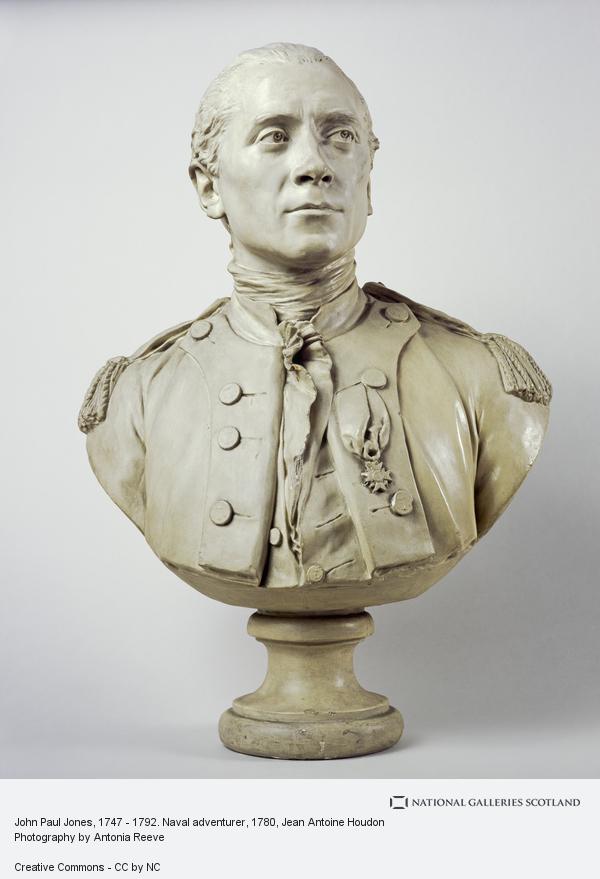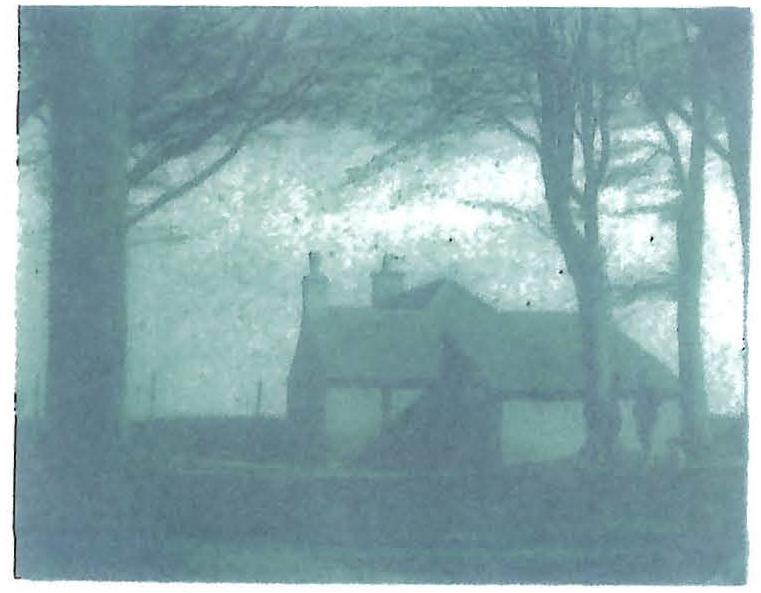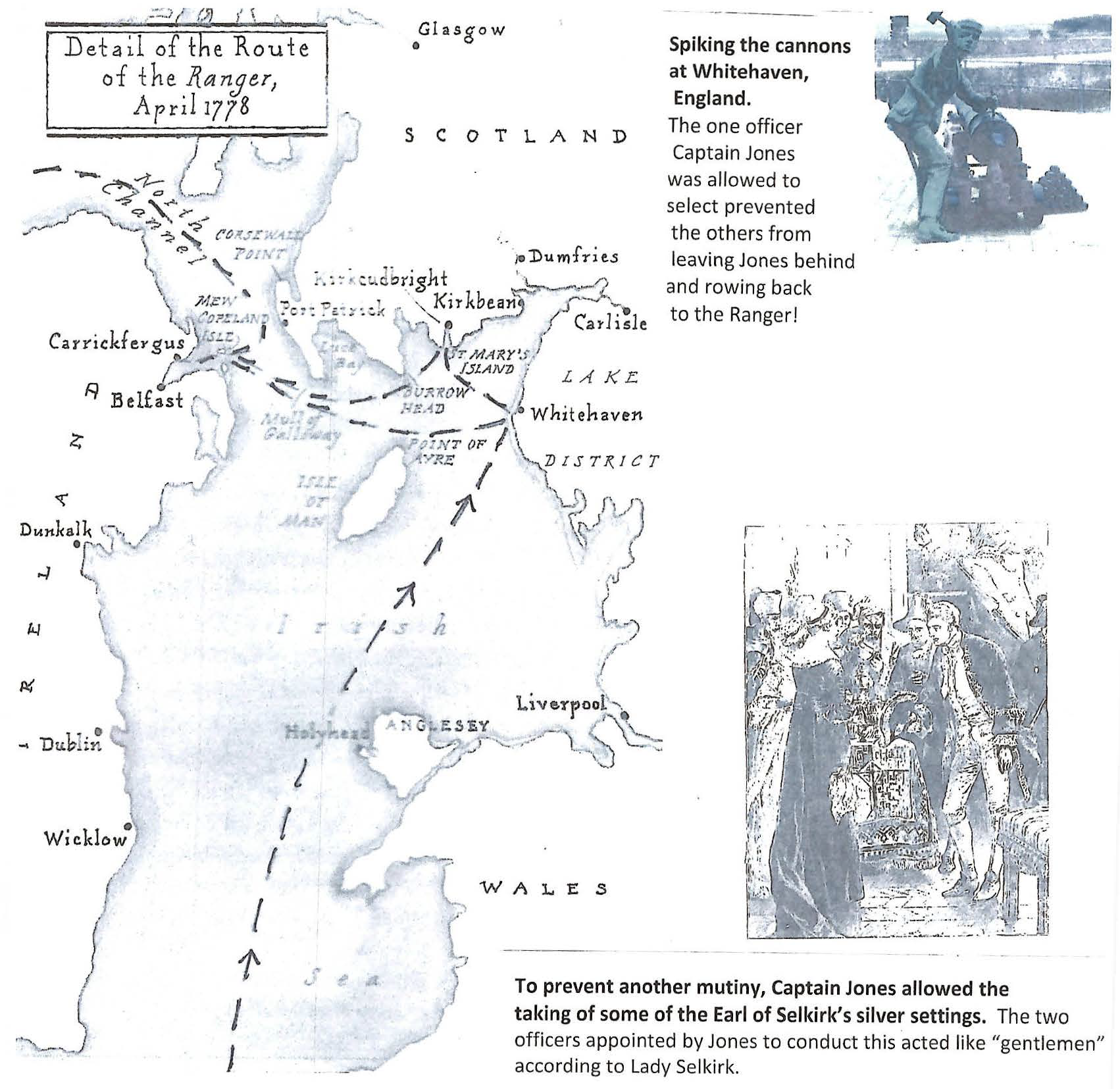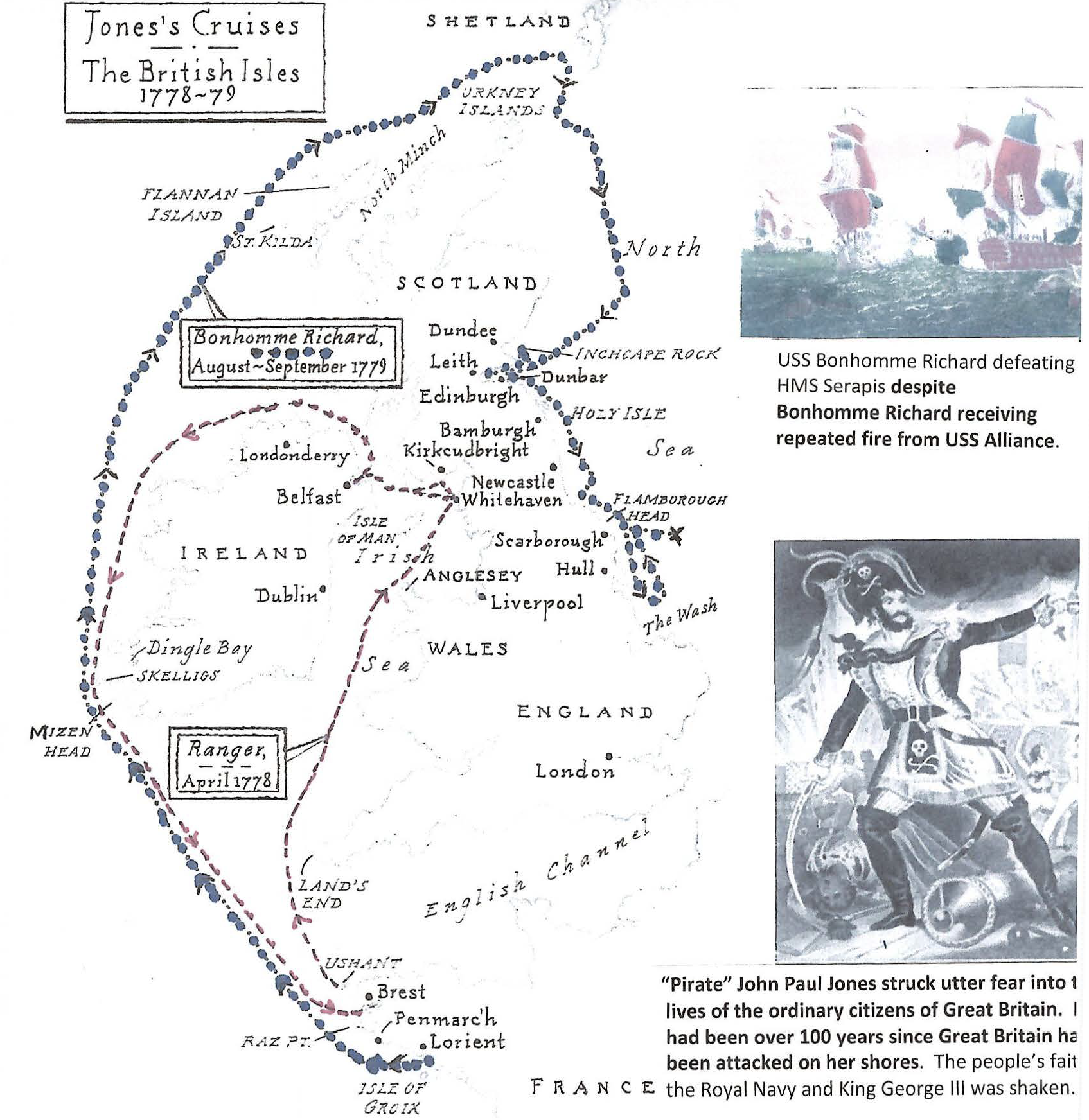JOHN PAUL JONES (1747-1792)
The Arbigland Estate (approximately 140,0 acres) occupies some of the most beautiful countryside of southwestern Scotland overlooking the Irish Sea (Solway Firth) near the border with England. Since 1690 it had been in the family of William Craik who was the owner of the estate during the life of John Paul Jones.
Not only was Craik an acquaintance of Benjamin Franklin, but one of Craik’s sons went on to become the personal doctor of George Washington and served as the head of the US Continental Army Medical Corps during the Revolutionary War. A neighbor of Craik was appointed by King George III to broker the treaty between the United States and the United Kingdom ending t he Revolutionary War.
John Paul Jones’ father was the groundskeeper of Arbigland Estate and his mother was a maid in the Arbigland Mansion. They were married November 29, 1733. William Craik provided the couple a three-room stone house for their home. John Paul was born July 6, 1747 (he added Jones after settling in America around late 1774) and was the fifth of seven children (the last two died soon after after birth) .
It should be noted that on April 16, 1746 the English had dealt the Scots a bitter defeat at the Battle of Culloden. The English, under the “Disarming Acts”, prohibited tartans, bagpipes and Scottish Judicial Courts. Obviously, the Scots were bitter toward the English.
As a child, John Paul Jones was drawn to the sea. At the near bye port of Carsethorn, he explored the ships, listened to the sailors’ stories and pretended to be in command of imaginary ships in battle. He was an excellent student and excelled in math, reading and writing.
In 1760, with the approval of his parents, John Paul Jones signed on as a cabin boy with the ship owner in close by Whitehaven, England; John Younger.
Jones served under Captain Robert Benson on the merchant ship “Friendship” (crew of 28, 2 masts, 179 tons, 18 cannons). It sailed from Whitehaven to Barbados to Virginia and back to Whitehaven to start the cycle again. In 3 years “Friendship” made 8 crossings. During the stops in Virginia, Jones was able to spend time with his brother William who had immigrated to Fredericksburgh, VA and had established a successful tailoring business.
In 1764, John Younger was forced to sell his business, including the “Friendship”. Jones was given his release with an excellent recommendation.

French sculptor Antoine Houdon created a life-size marble bust of Jones in 1780. He used Jones exact measurements and proportions. The captain ordered copies made as gifts.

John Paul Jones was born in the above cottage at Arbigland, in Kirkbean, Scotland. This cottage was on the estate of William Craik, for whom his mother and father both worked.
Picture Taken about 1906
Jones became a third mate on the slave ship “King George” out of Whitehaven, England and then became a first mate on the slave ship “Two Friends” out of Kingston, Jamaica. Although the money was good, Jones became disgusted with the slave trade and quit. For a time, he travelled Jamaica as a touring actor.
In 1768, a friend, Captain Samuel MacAdams of the merchant ship “John” (homeported in Kirkcudbright, Scotland) offered Jones passage back to Scotland from Jamaica. On the voyage back, Captain MacAdams and the first mate died. Jones was the only person on board who knew how to navigate, so he assumed command. Jones brought the “John” safely to Kirkcudbright. The owners of “John” made Jones the ship captain. In May 1770, on the way to Tobago, Jones had to flog the ship carpenter, Mungo Maxwell, for disobedience. Maxwell complained to the authorities in Tobago, but they investigated but found Jones innocent. Maxwell decided to return to Scotland on another ship. During the voyage back, Maxwell died of fever. Maxwell’s family had some influence in Kirkcudbright and held Jones responsible. When Jones return a little later, the sheriff arrested him and held him in the jail (The Tolbooth) for a couple of days before releasing him on his own account . Jones spent almost two years procuring the documentation to clear his name. During this period, he became a mason at the St. Bernard’s Lodge in Kirkcudbright on the backing of James Smith. Smith was a partner of Joseph Hewes of North Carolina who would become an important member of the committee creating the US Navy in the Revolutionary War.
In October 1772, Jones became the Captain and part owner of the ship “Betsy” (3 masts, 300 tons, 22 cannons} based in London. It sailed from London to Ireland to Madeira to Tobago then back to London. In October 1773, while in Tobago, a disgruntled crewmember tried to attack Jones. In self defense he had to kill the crew member . Since the crew member was part of an important Tobago family, and with the advice of many, Jones fled Tobago. From October 1773 – Oct 1774; no one is really sure of where Jones went. It was during this time that he adopted the name, John Paul Jones. He did flee to America and made himself know to such important American patriots as: Dr. John Read of Virginia, Thomas Jefferson of Virginia and Joseph Hewes of North Carolina.
On October 13, 1775 the US Navy was created. Primarily due to the influence of Joseph Hewes, Jones was named the senior First Lt. of the Continental Navy of the USS Alfred (Captain Saltonstall, 30 cannons). Born in Scotland, Jones was considered a foreigner by the colonists. Only because he was a Mason and known as an expert mariner, was he permitted to join the Continental Navy.
Jones distinguished himself as First Lt. onboard USS Alfred. As Captain of USS Providence he was one of the rare Continental Naval officers that scored victories and captured many British vessels in support of George Washington’s army. Yet, because he was still considered a foreigner , Jones was listed as 18 in seniority of ship captains in October 1776 by the Continental Congress! Yet later in 1776, Jones led the USS Alfred and USS Providence in the capture and destruction of several British ships. One of these captures (HMS Mellish) was essentially in providing winter coats for Washington ‘s army so as to enable the victories at Trenton and Princeton. For all his heroics, Jones returned to find out he was ranked 18 and was relieved of his command by an officer who had never commanded a ship!
Jones spend much of 1777 advising Robert Morris, now head of the Marine Committee, on the need of the Navy. Jones became a pain in the butt to the Continental Congress. In June 1777, Jones was named Captain of the USS Ranger being built in New Hampshire. On November 1, 1777; USS Ranger departed for France with news of the US victory over England at Saratoga, NY. USS Ranger arrived in France on December 2, 1777.
While in France, Jones found himself under the authority of Benjamin Franklin. The two quickly became friends. Many months went by as Franklin, with inputs from Jones, negotiated with France on how best to use Jones. Finally, on April 8, 1778; USS Ranger departed France.
On April 22, 1778; Jones led two small boats ashore to attack the town of Whitehaven, England. Although tactically a failure, the attack was a strategic victory. For the first time in over a century, the British Isle had been invaded. The fear and outrage from Jones’ attack on the British population was devastating.
The British Navy was forced to reposition many ships from America to defend to homeland as well as station many British soldiers to man homeland defenses.
More importantly, British shipping insurance rates skyrocketed which had a devastating affect on the British economy .
The next day, April 23, 1778; Jones sailed a bit north to Saint Mary ‘s Isle located near Kirkcudbright . He wanted to kidnap the Earl of Selkirk in order to exchange for American POW’s held by the British . The Earl was not home, so they had to settle for the family silver tea service (the crew had not been paid in quite a while) . Jones did buy the silver and returned it to the family years later.


On April 24, 1778; the USS Ranger attacked the HMS Drake. Evenly matched, in a battle that lasted just over an hour. HMS Drake surrendered.
Jones returned to France with HMS Drake on May 7, 1778. He was treated as a rock star by the people and government of France. Yet, it wasn’t until February 1779 that the King of France (Louise XVI) gave Jones a ship and orders to attack the British.
Jones named the ship the USS Bonhomme Richard in honor of Benjamin Franklin. With France paying all the bills, it wasn’t until August 14, 1779 that USS Bonhomme Richard, USS Alliance, France warships Pallas, Vengance, Cerf and privateers Monsieur and Grandville departed France to make raids against northern Scotland/England . Quickly the privateers abandoned Jones. The other ships would disappear for days or weeks, depending on the mood of the captain.
The cruise was turning out to be a failure. Jones tried to attack the capital of his native Scotland, but the winds would not permit it. His fellow captains would not agree to attack other British cities . Instead of following his orders, the other French captains would do as they please.
But on September 23, 1779; off the coast of eastern England (Flamborough Head) Jones spotted over 40 British merchant ships. He had in his company the USS Alliance and the French warships Pallas and Vengance. The British merchant ships were being escorted by the HMS Serapis (50 guns) and HMS Countess of Scarborough (20 guns). Jones ordered a line of battle , but again no one followed his orders!
Jones, in the USS Bonhomme Richard (40 guns) made for the HMS Serapis and the Pallas (32 guns) made for the HMS Countess of Scarborough. The Vengance would remain way distant from the battles . The USS Alliance, unfortunately, would occasionally enter the battle to fire upon both the USS Bonhomme Richard and HMS Serapis!
The USS Bonhomme Richard and HMS Serapis would battle each other in front of thousands ashore for almost four hours. Jones was outmatched in every way, yet he refused to give up. With his ship sinking beneath him, the British captain asked Jones if he surrendered. Jones made his historic reply, “I Have NotYet Begun to Fight” . Shortly after this reply, one of Jones‘ crew threw a grenade into the HMS Serapis that exploded and caused such devastation that the British captain surrendered! Never had the British suffered such a defeat, especially in their home waters!
Jones returns to France and is an international superstar! King Louise XVI awards Jones a rare medal and an even rarer sword of gold! What Jones’ had accomplished is recognized by international leaders. Unfortunately, the US Navy does no longer exist. Fortunately, the French Navy steps in and America is able to win its independence.
Not being able to afford a Navy, Thomas Jefferson gives permission to Jones’ to serve Catherine the Great as an Admiral in her Navy verses the Turks.
Jones does so and wins two great victories over the Turks in 1788. Unfortunately, the court of Catherine hates any foreigner , especially one who is competent , and Jones is forced to leave Russia in shame in July 1789.
In May 1790 Jones arrives in Paris. He lives in his apartment on the Rue de Tournon until his death on July 18, 1792. America turns its back on Jones and has nothing to do with his burial. France steps up and provides Jones with a proper burial. He is buried in the only Protestant cemetery outside the city walls. It is an unmarked grave .
In 1899, the US Ambassador to France, Horace Porter , began his personal search for the body of John Paul Jones. On March 31, 1905 the coffin of Jones was found!
On July 6, 1905; the US Navy Fleet took possession of Jones’ body and began the voyage back to the US.
On April 24, 1905; President Teddy Roosevelt headed the ceremony committing the body of John Paul Jones to the US Naval Academy.
January 26, 1913; John Paul Jones crypt completed.

English support for defeating the American cause was decreasing in large measure, due to Jones’ actions. Not only his actions but the manner in which he carried them out. Unlike the British, Jones never attacked civilian targets. The Earl of Selkirk was a member of King George III’s government (and Jones did return the silver tea service set taken by his crew) .
Due to John Paul Jones: the cause of America grew in respect and support by the rest of Europe, ships of the Royal Navy were withdrawn from North America and brought back to patrol Great Britain against Jones, increased shipping costs resulted in economic burdens on Great Britain and all this resulted in increased pressure on King George III to make peace with the colonies.
John Paul Jones is one of America’s most important Founding Fathers. He is the only Naval Officer and on ly one of five (including George Washington) awarded a gold medal by the Continental Congress. He was also inducted into the Society of Cincinnati.
John Paul Jones is the Father of the US Navy. In addition to capturing or sinking more than two dozen British merchants , he defeated the following British warships: HMS Drake and HMS Serapis.
John Paul Jones is the only foreigner awarded by King Louis XVI the French Order of Military Merit.
Catherine the Great awarded him the Russian Order of St. Anne .

CONTINENTAL CONGRESS GOLD MEDAL
The Continental Congress only awarded 7 Gold Medals for service during the American Revolution (1775-1783). Six of the Gold Medal were to Army Generals:
- General George Washington: Leader of the Continental Army.
- Maj Gen. Gates: Battle of Saratoga victor.
- Maj Gen. Wayne: Battle of Stony Point victor.
- Maj “Light Horse Harry” Lee: Battle of Paulus Hook victor.
- BGen Daniel Morgan: Battle of Cowpens victor.
- Maj Gen. Greene: For actions leading to defeat of British Gen Cornwallis at Yorktown.
- Captain John Paul Jones: For his heroic actions in the victory at Flamborough Head.
Captain John Paul Jones was the only Continental Naval Officer and the only foreign-born individual to be awarded the Gold Medal. The Continental Congress granted also awarded Jones American citizenship.
John Paul Jones was awarded the Military and Hospitaller Order of St. Lazarus of Jerusalem.
Though born of humble Scottish origins , Jones was able to overcome English prejudices and rise to the rank of a merchant ship captain/master.
Similarly, considered an enemy foreigner by many in America, Jones was able to work his way up the chain of command and earn the rank as the senior captain in the Continental Navy.
Despite numerous attempts by the highest officials in Russia, Jones was able to achieve incredible naval victories over the Turkish Navy.
The youngest child of a Scottish groundskeeper took on the greatest naval power the world had ever seen and almost single handedly shook it to its core. By himself, he invaded this unbeatable military power and for the first time in over a century made it taste fear.
Even more impressive, he took on the power of class and privilege. Position and authority should be earned based on merit and accomplishment . John Paul Jones fought this battle in every county he served and sacrificed for. It is this part of his character combined with his refusal to give up that makes John Paul Jones such an inspirational and exceptional human being.

John Paul Jones is truly one of the greatest Founding Fathers America seems to have forgotten. In this time of challenge from the virus, we can all draw strength from the many life and death challenges he faced and overcame. It is amazing what an unbreakable will to win can achieve! I urge everyone to check out this website and visit this site of his birth and childhood. Additionally, take a few moments to read about his amazing life. Finally, tell others about this incredible Scot that all of America and those that cherish freedom are forever indebted to!!
That’s very true Jim. The joy of freedom must be the biggest gift that we have missed terribly in Lockdown worldwide, because of the Coronavirus. When we all regain our freedom of travel, we hope that many people will come and visit the Birthplace Cottage Museum where one man made a huge difference.
Jim, it was an Honour to meet you July 04th (2021). I hope you managed to auction the fly fishing rod ~ Thank you so very much for the challenge coin from The U.S.S. John Paul Jomes. The cover and the lovely letter. Hope to see you again very soo Sir!.
Respectfully,
Claire~Marie.